How to pass the quicksand in the well: features of the
The question of how to deal with float in the well, usually arises suddenly. Of course, if we had previously studied the characteristics of soils on our site, there should not be any unpleasant surprises, but if we first started to dig, and only then, we would have to somehow get out of this situation.
Below we will describe how to equip the source on such a complex ground, what alternative scenarios exist, and how to clean the well from the quicksand if the lower horizons are gradually silted up.
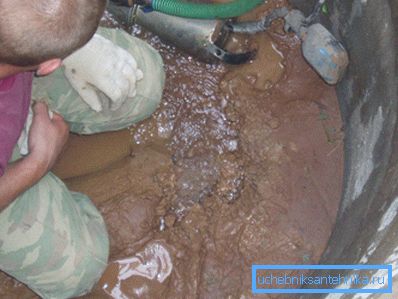
Description of the situation
Before deciding how to dig a well in a quicksand, it is worth a closer look at this phenomenon:
- The quicksand is a layer of soil with quite specific features. As a rule, it is based on fine sand interspersed with silt and soil organic matter.
- All this material is distinguished by high humidity, which reduces the cohesion between particles of clay and sand.
- In most cases, the "floating" mass is under pressure inside the cavity in the ground. If the integrity of this “pocket” is violated, the quicksand begins to flow into the excavated pit, filling up all the available volume.
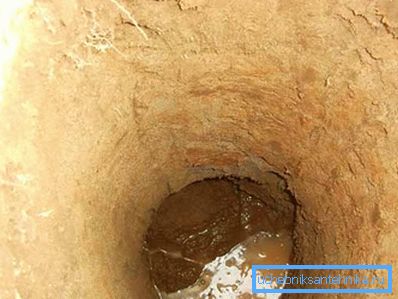
Note! The mechanism of formation of quicksies has not been thoroughly studied, so it is rather difficult to predict their appearance. However, most often these layers are found near aquifers, which adds problems during any kind of earthworks.
The main difficulty in working with such a ground lies precisely in its uncontrolled behavior: the weakly bound sand mass will necessarily fill the dug recess, and after a few weeks of operation we will have to decide how to clean the well from the flooded section..
Arrangement of the source
Digging a well
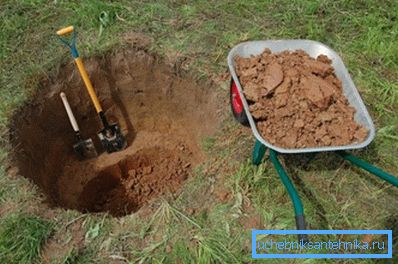
In fact, digging a well in “floating” soil is far from the best idea.
The reason is simple:
- Firstly, the process of excavation itself is repeatedly complicated. It is necessary to dig in a hurry, trying to win at least several tens of centimeters from the constantly arriving mass of wet sand, which would make it possible to install a concrete locking ring.
- Secondly, even when the walls of the well are protected, the silting will necessarily continue. So you have to spend money on regular cleaning of the aquifer.
Note! When working with quicksand, you must strictly follow the safety regulations.
And yet the answer to the question of how to dig a well in quicksand, was found, and quite a long time ago.
If you are not stopped by the above considerations, we recommend that you carefully study the technology:
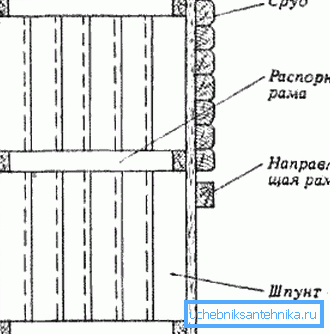
- To dig a hole, we need to make a so-called sheet pile - a wall of boards or bars. The instruction recommends making the tongue as strong as possible, then it can withstand repeated use.
- For solid soils, we put a steel shoe with a cutting edge on the lower part of the tongue.
- Having reached the floating part, we install four grooves along the perimeter of the well and hammer their lower parts into 30-40 cm.
Tip! You need to hammer close to the walls, on a plumb line.
- Next, select the soil inside the resulting box. In no case do not expose the bottom edge of the dowel - otherwise a mass of flooded sand will immediately start coming from under it.
- Repeat the operation until we pass the entire quicksand, or until we reach the impermeable horizon.

Of course, this technique is very time consuming, but in this case, you can build a well with your own hands, without attracting specialists with sophisticated equipment.
Alternative solutions
However, this solution can not be called perfect.
If we dug a well and suddenly came across a quicksand, then it would be much more rational to do the following:
- The bottom of the dug well is leveled.
- In the center we drill a hole to a water-impermeable horizon.
- The walls of the borehole must be strengthened with durable casing, which will restrain the flow.
- In the lower part, we install a high-quality filter for the well, and along the perimeter we perform gravel backfilling with the addition of clay.
- We strengthen the walls of the well with brickwork or pour concrete in the formwork. In this case, the recess will play the role of a caisson, in which you can place water-lifting equipment.
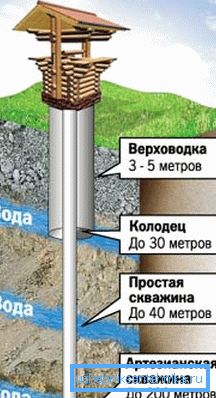
Of course, the price of such a solution is much higher than that of a simple well. Yes, and have to work hard. But then we will get a well-equipped source with a guaranteed supply of water!
Note! But, if we do everything correctly, there will be no shortage of water - watering the soil will play its role.
Source maintenance
We also need to figure out how to get rid of the quicksand in a well that is already in use.
And if we are to be exact, then rather, how to minimize its consequences, because it is almost impossible to remove the layer of flooded sand.
- The easiest way to fight is high-quality tongue and floor arrangement made of aspen logs.
- Shield knocked out of the churbak diameter of not less than 20 cm or thick boards. At the same time, the dimensions of the shield must be such that its edges extend beyond the inner lining at least 10 cm on each side.
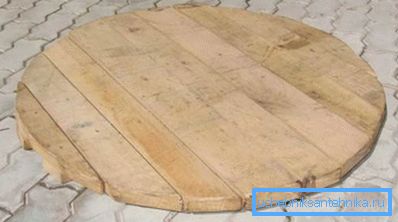
- If the power of the aquifer allows, then we pour gravel and pebbles up to a meter on top of the shield.
- Installing such a device helps to protect the tender part of the tank from the penetration of sand and clay, so that at the point of intake there will be a clear liquid.
Also, when operating such wells, the following recommendations should be followed:
- At one time you should not choose a large amount of water. Otherwise, the silting rate will accelerate due to uneven drying and wetting of the walls.
- Cleaning should be carried out regularly, at the first sign of silting.
- If possible, it is necessary to update the bottom filter of the well construction annually.
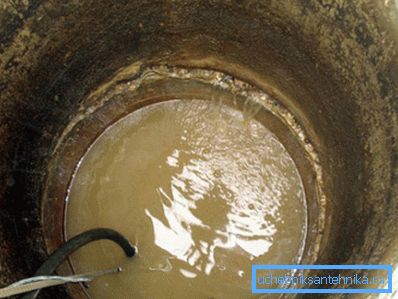
Conclusion
We hope that thanks to the above recommendations, you figured out how to stop the quicksand in the well during the digging stage and what to do to minimize the consequences of silting.
In fact, this situation is rather unpleasant, but with the right approach, it is possible to extract pluses from it - as we noted above, the presence of floating layers of soil is a sign of the presence of a powerful aquifer. If you want to learn more about the fight against this phenomenon, we recommend that you study the video in this article.